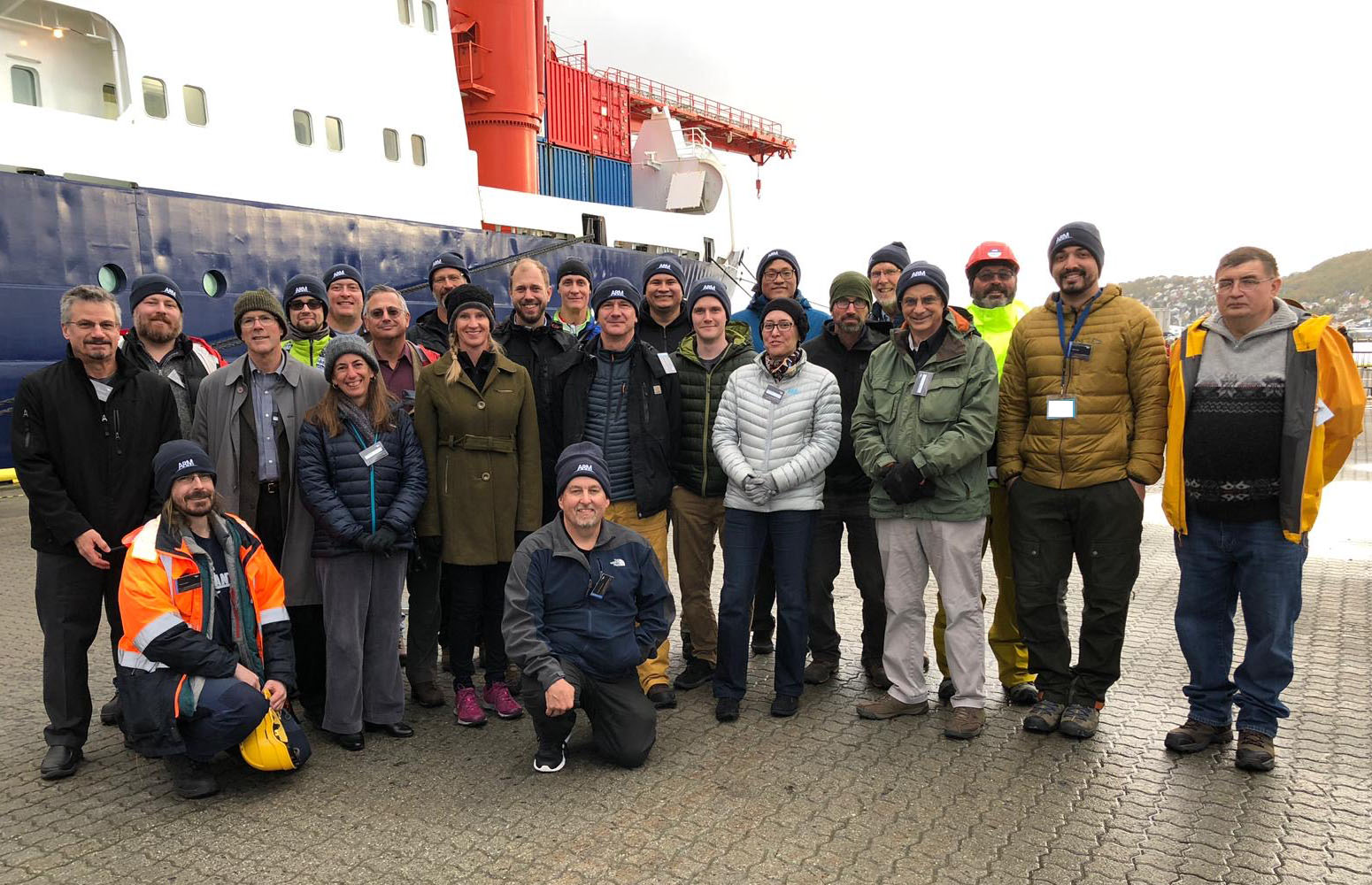DOE Labs Bolster Major ARM Effort in MOSAiC Expedition
Published: 20 January 2020

By the end of the Multidisciplinary Drifting Observatory for the Study of the Arctic Climate (MOSAiC) expedition, the Atmospheric Radiation Measurement (ARM) user facility is expected to have collected more data than any other participant.
That kind of effort would not be possible without support from the U.S. Department of Energy (DOE) national laboratories that help manage and operate ARM. They have played an important role in carrying out MOSAiC’s mission since well before the icebreaker R/V Polarstern launched from Tromsø, Norway, in September 2019. (The Polarstern is serving as the central observatory during the expedition, which ends in October 2020.)
So far, groups from DOE national labs have hardened ARM instruments for the harsh arctic conditions and loaded them onto the Polarstern, set up research stations on ice, and transported, processed, and archived data for all to use. Some of their work has been done during polar night, when the sun doesn’t rise, or in the view of polar bears. And the work is far from over.
Read about how:
- A team from Los Alamos National Laboratory (LANL) in New Mexico is monitoring and maintaining ARM instruments during MOSAiC. Matthew Shupe, co-coordinating scientist for MOSAiC, visited the LANL group and provided scientific guidance during beta testing of ARM MOSAiC instrumentation in April 2019. LANL crew members later installed those instruments on the Polarstern in Tromsø.
- From their home base in Washington state and in Tromsø, scientists from Pacific Northwest National Laboratory (PNNL) prepared ARM instruments, including radars, the Doppler lidar, and radiometers, for the trip to the central Arctic. ARM technical and communications leadership from PNNL also traveled to Tromsø to view part of the installation and see off the Polarstern. PNNL science translators and software developers will work with other labs to provide MOSAiC data products for ARM users.
- Misha Krassovski, a computer scientist from Oak Ridge National Laboratory in Tennessee, set up a central computer on the Polarstern to ship data back to the ARM Data Center team. Upon returning to Oak Ridge, Krassovski brought hard drives full of MOSAiC data to the ARM Data Center. ARM Data Services Manager Giri Prakash estimates that ARM instruments could produce data amounting to 250 terabytes, or “250 times your typical laptop,” during MOSAiC.
- Instrument mentors Janek Uin and Matthew Boyer of Brookhaven National Laboratory in New York traveled with the Polarstern to set up and test aerosol instruments. After their work on MOSAiC, Uin and Boyer turned their attention to another ARM field campaign, the Cold-Air Outbreaks in the Marine Boundary Layer Experiment (COMBLE), setting up in northern Norway.
Check out a growing list of MOSAiC blogs, including contributions from Krassovski, Uin, Boyer, and LANL’s David Chu.
Keep up with the Atmospheric Observer
Updates on ARM news, events, and opportunities delivered to your inbox
ARM User Profile
ARM welcomes users from all institutions and nations. A free ARM user account is needed to access ARM data.


















